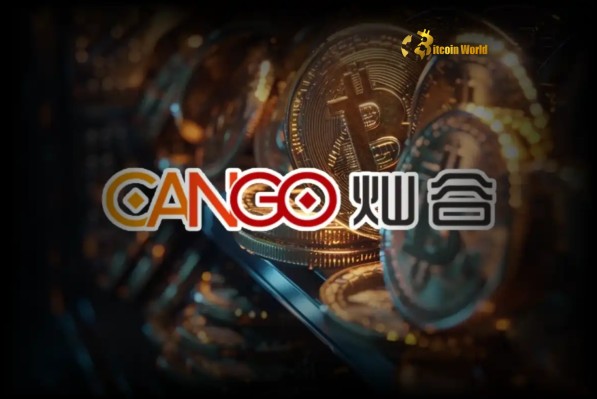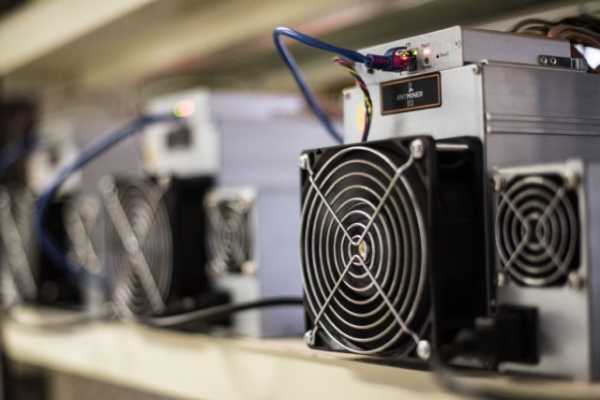Bitcoin Mining: Impressive Growth Cango Adds 109.1 BTC

In an ever-changing environment where traditional industries intersect with modern digital finance, news from unexpected sources often resonates the most. This week, Cango Inc., best known as China’s leading car transaction service platform, caught the attention of the crypto community with a major announcement about its Bitcoin mining operations.
What's Behind Cango's Decision to Enter Bitcoin Mining?
At first glance, Cango’s move into the world of digital assets may seem surprising for a company with roots in the automotive industry. However, it reflects a growing trend among various corporations looking to diversify their assets, explore new sources of income, and potentially hedge against macroeconomic risks. By purchasing Bitcoin (BTC) mining machines, reportedly from industry giant Bitmain, Cango is actively participating in the process that supports the Bitcoin network and generates new BTC.
Bitcoin mining involves using powerful computers to solve complex mathematical problems. The first miner to successfully solve the problem adds the next block of transactions to the Bitcoin blockchain and is rewarded with new Bitcoins and transaction fees. The process requires significant computing power and energy, making it a capital-intensive endeavor. For a company like Cango, investing in mining infrastructure represents a strategic decision to directly accumulate a digital asset that many believe has long-term growth potential.
A closer look at Cango BTC's growing assets
The gist of Cango’s recent announcement, shared through their official channels, is the impressive figure of 109.1 BTC mined in a single week. This is a significant amount of Bitcoin, demonstrating efficient operations and significant computing power. Perhaps more importantly, however, this weekly yield has significantly increased their overall reserves.
After this successful week of mining, Cango’s total BTC holdings have reached a massive 3,398 BTC. To put this into context, it’s worth noting the approximate value (given that cryptocurrency prices are extremely volatile and constantly fluctuate). At the time of writing, 3,398 BTC represents a multi-million dollar asset on their balance sheet. This puts Cango among the significant corporate holders of Bitcoin, although significantly smaller than giants like MicroStrategy, whose strategy is primarily focused on accumulating BTC.
The increase in their holdings demonstrates that investing in mining equipment is paying off, steadily increasing their digital holdings over time. This is not just a speculative purchase; it is an active accumulation strategy through operations.
Why are more companies choosing Bitcoin enterprise strategies?
Cango is not alone in exploring the potential of digital assets. The trend of companies adding Bitcoin to their balance sheets, often referred to as adopting a corporate Bitcoin strategy , has gained significant momentum since 2020. Companies cite a variety of reasons for the move:
- Inflation Hedge: Bitcoin is often seen as a possible hedge against fiat currency devaluation due to its limited supply.
- Asset Diversification: Adding an uncorrelated asset like Bitcoin can help diversify a company's treasury reserves away from traditional cash and bonds.
- Growth Potential: Companies expect Bitcoin's value to rise in the long term.
- Attracting talent and investor interest: Introducing innovative technologies like Bitcoin can create the impression that a company is progressive.
- New revenue streams: For companies like Cango, mining directly generates new assets and potential revenue.
While holding bitcoin is one approach, actively participating in cryptocurrency mining , as Cango does, represents a deeper operational commitment to the ecosystem. It requires skills in setting up and managing mining infrastructure, managing energy costs, and dealing with technical complexities.
Navigating the World of Crypto Mining: Challenges and Considerations
While the rewards for successfully mining cryptocurrency , such as accumulating 109.1 BTC in a week, are attractive, the process comes with significant challenges:
- High capital costs: Purchasing powerful mining equipment like Bitmain machines requires a significant initial investment.
- Energy Consumption and Cost: Mining requires a lot of energy. The cost and availability of electricity are major factors influencing the profitability and location of production.
- Mining Difficulty: As more miners join the network, the difficulty of solving mathematical problems increases, requiring more powerful hardware to maintain the same level of performance.
- Equipment aging: Mining technology evolves rapidly, and over time, equipment may become less efficient or outdated.
- Regulatory uncertainty: The regulatory framework for cryptocurrency mining varies significantly across jurisdictions and can change unexpectedly, creating risks, especially for companies operating in complex regions.
Source: cryptonews.net



